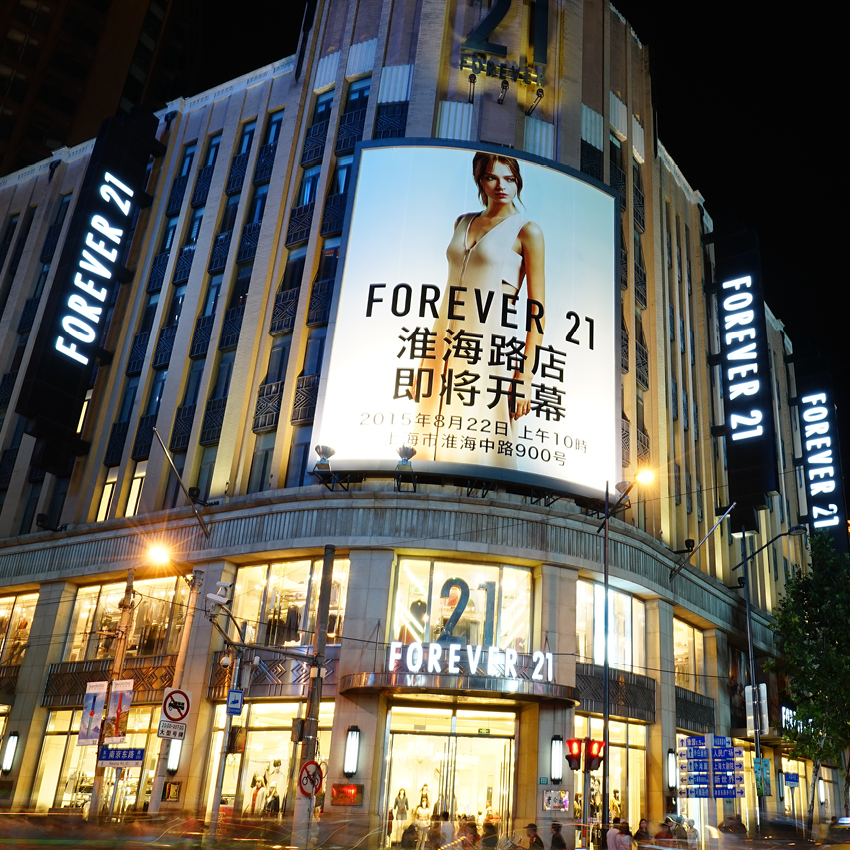On October 9, 2019, I wrote Forever 21: Cut Your Losses and Die Happily and predicted Forever 21’s demise, and why. And predictably, they slipped into bankruptcy. However, they found a life-support respirator, a collective called Authentic Brands Group, Simon Properties and Brookfield Property Partners, who acquired the brand for $81 million in February 2020. The plan was for Forever 21’s international business to be handled by licensing specialist ABG. The brand was tossed into ABG’s pile of other losing brands. Then, along with Simon Properties (owning a bunch of losing malls and having acquired JC Penney, a losing anchor, literally and metaphorically, in many of those malls), they formed Simon Properties Authentic Brands Concepts (SPARC), which would continue to house many of ABG’s brands. But get this: Here’s a real whopper of an idea. At the time, David Simon talked about putting many of ABG’s dying brands into the JC Penney stores. Are you confused yet or just awestruck? As I have said, that deal with ABG brands may indeed make JCP an even larger albatross that will take the entire enterprise down.
Once a Contender
Once upon a time, Forever 21 was more than a contender. It captured the zeitgeist among young consumers in the United States as a cool brand. At its peak of about $4.5 billion in 2015 with around 600 stores worldwide and roughly 480 in the U.S. (with 150 more planned during that year), their race to ubiquity with humongous stores (over 24,000 square-feet) loaded with merchandise “stacked high, hoping it would fly,” was a recipe for disaster. In short, ubiquity is the enemy of cool. Forever 21 became frozen full stop among young consumers, and everything started to go south, ultimately into bankruptcy.
[callout]Maybe CEO, Jamie Salter believes that AGB as the international licensing specialist along with new Forever 21 CEO, Daniel Kulle, can find a new path to victory in China, while also reversing Forever 21’s declining trajectory in the U.S. and other parts of the world.[/callout]
China: Third Strikeout or Third Time a Charm?
Forever 21’s first foray into China was in 2008. It failed fast. It’s second attempt started in 201l, and it muddled along for eight years, only to leave again in May 2019. They shut down their website and online stores on popular Chinese marketplaces Tmall and JD.com, as well as the remainder of its stores in China. At its peak in 2018, Forever 21 had a mere 20 stores. In contrast, its fast-fashion competitors, Zara had about 593 stores, H&M around 535, and Uniqlo roughly 672.
While Forever 21 barely moved the needle in China, they learned a lot. And the knowledge they gained was that as they raced to scale to gain a competitive share in the fast-fashion space, their push was too much to manage. They were also up against the accelerating growth of Chinese digital and local brands, which, of course, had the home team advantage. And Taobao, the most popular ecommerce platform in China, hosted millions of these third-party, low-cost brands. Since these Chinese native brands are a part of the culture, they could better style, fit, and curate for their young consumers. Furthermore, the home teams’ supply chains were in factories across the street, so to speak, and delivered within days vs. months crossing the ocean. The Chinese brands were able to cut enormous costs out of the chain, resulting in lower prices for consumers.
So, the acceleration of China’s home-grown brands along with well-established peer competitors, Zara, H&M, and Uniqlo, pretty much nipped Forever 21 in the bud.
According to an article in WWD, “Taobao recorded gross merchandise volume of nearly 2.7 trillion RMB, or $400 billion, in fiscal year 2018, and women’s apparel is by far its most popular category. Chinese apparel companies such as Ellassay, JNBY, Huimei Group and Handu Group all built their businesses on Taobao and each of them have gone public over the last five years. These local competitors are better funded, have wide distribution networks, and can better tailor their products to local tastes.
“In short, it’s difficult to occupy the middle-market segment in China because it’s easy to get squeezed out by the competition. Low-cost domestic competitors are on the low-middle end, and premium/luxury foreign brands on the high end. British fashion retailers Asos and Marks & Spencer both ran into this problem and exited the China market in 2016.”
This knowledge is likely very instructive to the new owners of the brand and may help them in their third attempt to re-enter China. It can also be very instructive to other brands and retailers attempting to establish a footprint in China.
My question however, is if Forever 21 learned so much during those eight years about why they were failing and therefore retreating, why did they hang in there for so long in the first place? Eight years seems a little long to get the message. Plus, since the competition has continued to grow, why are they now making a third attempt?
Maybe CEO, Jamie Salter believes that AGB as the international licensing specialist along with new Forever 21 CEO, Daniel Kulle, can find a new path to victory in China, while also reversing Forever 21’s declining trajectory in the U.S. and other parts of the world. Kulle was hired in February 2020 to manage the brand out of bankruptcy just in time to face Covid-19 and a retail world of shutdowns. Talk about timing. It couldn’t have been worse.
Back to China with Lasonic Who?
Many U.S. domestic brands wisely enter foreign markets by partnering with successful local entities with similar business models. We all know that Bloomingdale’s partnered with the Al Tayer Group, the largest luxury retailer in the Middle East, to tap into their expertise for opening and running a flagship in Dubai.
Okay, that makes sense, right? Al Tayer Group certainly has their finger on the pulse of Dubai’s consumers and particularly those interested in the merchandise and experience expected of the Bloomingdale’s brand.
I guess Forever 21 has the same thing expectation in mind. According to the announcement on Forever 21’s WeChat, they are returning to China with a licensing deal authorizing Lasonic Limited Xusheng Co. Ltd, and its subsidiary, Xusheng Electrical Co. Ltd. in Shenzhen, to manage its operation in China. It’s a Hong Kong-based electrical, electronics and lighting products manufacturer. Really? I couldn’t imagine a better fit. Just kidding.
What’s in a Licensing Deal?
Lasonic manages the licensing businesses of emoji, Hello Kitty, Little Twin Stars, Spongebob and Pepsi. These are great pop-culture brands, but it’s another head-scratcher for me trying to understand the Lasonic alignment with Forever 21. Maybe there is some mysterious underlying expertise that Lasonic has. Unlike Al Tayer’s retail expertise and ability to successfully operate Bloomingdale’s in Dubai, I can’t see Lasonic’s capability to roll out and manage the Forever 21 brand. They do intellectual property licensing, event planning and merchandising. But what’s the plan here?
Forever 21 is also re-entering ecommerce platforms like Vip.com, Pinduoduo, will open a flagship on Alibaba’s Tmall, and build brick-and-mortar stores in many major cities in China. So, is Forever 21’s third attempt to compete in China a “third strike and you’re out,” or is it “third time is a charm?”
Have they learned from all the mistakes made during their eight-year second round in China, and have a completely new strategy to be executed by successful retail professionals in China (as do the big three, H&M, Uniqlo and Zara)? If they haven’t, and pressured by thousands of Chinese home-grown brands that continue to gain market share, then my prediction is that Forever 21 will make that third strike and will be out of the game.
Sorry to be the cynic. But you know…




